Even though we were well on our way back home from Florida, we couldn’t resist making an additional stop or two in Louisiana before the final home stretch to Texas. Beignets, check. Gumbo, check. Wildlife refuge, check.
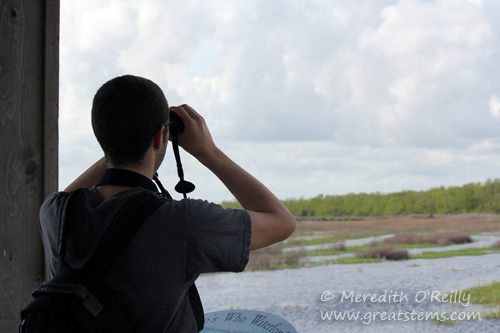 We wanted to visit a wildife refuge in Louisiana to get an idea of environmental differences between it and Florida — and if we had an opportunity, to sneak in a glimpse of the coast. The answer — the Creole Nature Trail, a long wildlife-scenic highway route south of Lake Charles. The trail took us to the Cameron Prairie Wildlife Refuge, as well as several other viewing spots.
We wanted to visit a wildife refuge in Louisiana to get an idea of environmental differences between it and Florida — and if we had an opportunity, to sneak in a glimpse of the coast. The answer — the Creole Nature Trail, a long wildlife-scenic highway route south of Lake Charles. The trail took us to the Cameron Prairie Wildlife Refuge, as well as several other viewing spots.
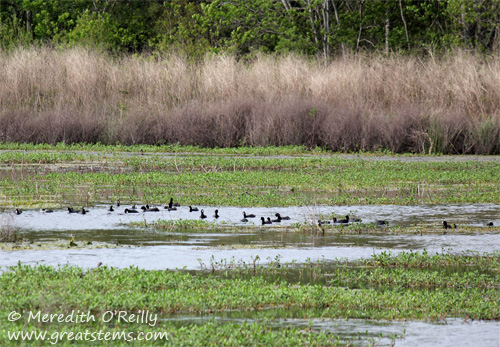
Cameron Prairie Wildlife Refuge’s primary purpose is to support migratory birds, such as wintering waterfowl, as well as many other animal species with its 9,621 acres of marsh, coastal prairie, and old rice fields.
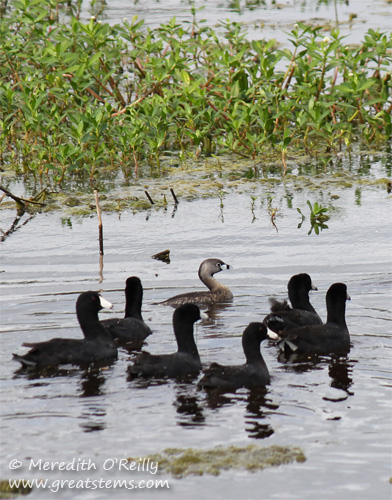
A Pied-Billed Grebe swims among American Coots
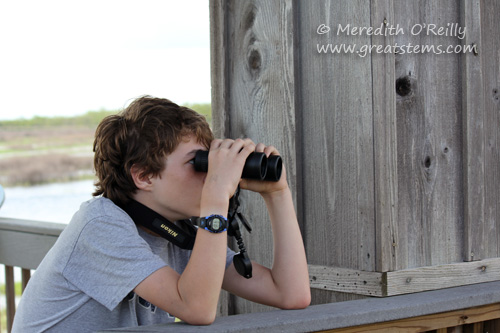 A boardwalk and observation deck make it easy to look search for water-loving birds, and we observed White Ibises, different species of ducks, Great Egrets, Coots, Grebes, Great Blue Herons, and others.
A boardwalk and observation deck make it easy to look search for water-loving birds, and we observed White Ibises, different species of ducks, Great Egrets, Coots, Grebes, Great Blue Herons, and others.
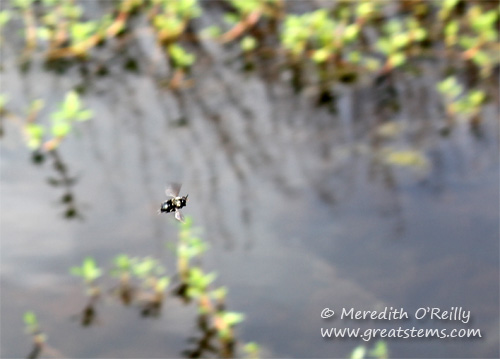 Carpenter Bee — it’s very difficult to capture an image of this fast-flying insect!
Carpenter Bee — it’s very difficult to capture an image of this fast-flying insect!
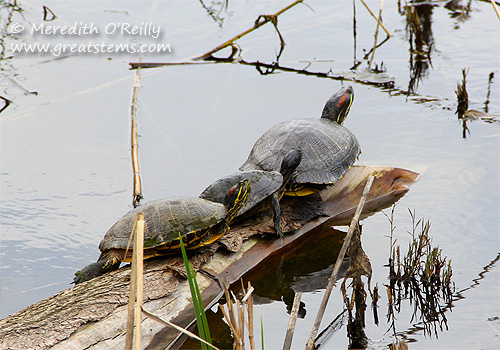
Of course, many other wildlife species live at or visit the refuge — turtles, lizards, butterflies, insects, and, of course, alligators.
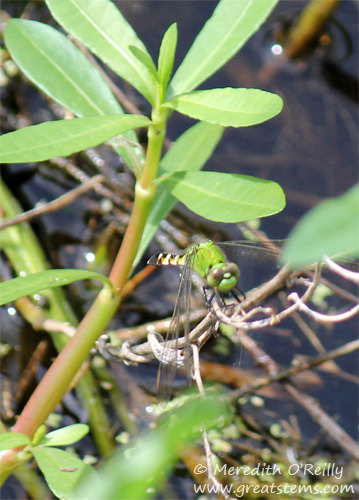 Eastern Pondhawk
Eastern Pondhawk
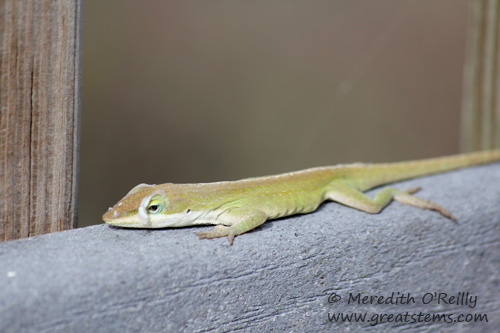 Green Anole, Shedding
Green Anole, Shedding
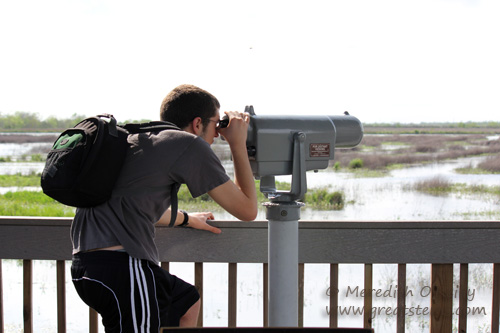 The boys, throughout our entire trip, were quite the naturalists, and they were excellent at both finding and IDing wildlife species — Louisiana was no exception.
The boys, throughout our entire trip, were quite the naturalists, and they were excellent at both finding and IDing wildlife species — Louisiana was no exception.
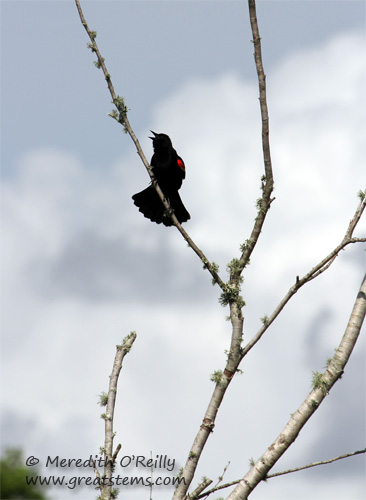 The Red-Winged Blackbirds were the most plentiful birds we saw in southwestern Louisiana. Great numbers of large flocks were spotted time and again throughout the marshland and agricultural areas we visited.
The Red-Winged Blackbirds were the most plentiful birds we saw in southwestern Louisiana. Great numbers of large flocks were spotted time and again throughout the marshland and agricultural areas we visited.
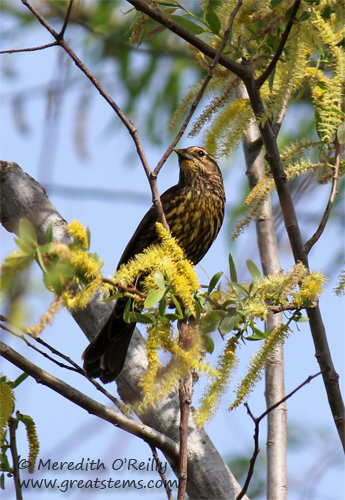 Female Red-Winged Blackbird
Female Red-Winged Blackbird
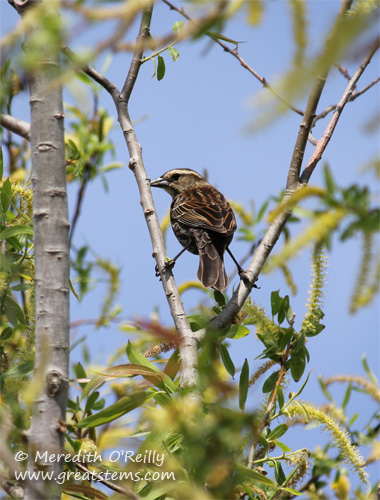
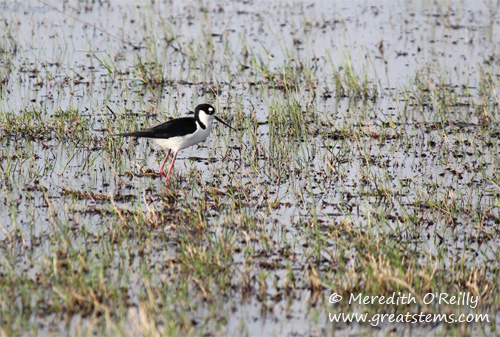
Black-Necked Stilt
Leaving the refuge, we continued toward the coast, the roads taking us past miles and miles of marshland.Often we could see alligators along the road’s edge, where marsh waters attracted a smorgasbord of animals on which an alligator might feast. Unfortunately, this also meant that we occasionally saw dead alligators along the road, a car or truck likely their source of doom. One deceased alligator looked to be at least ten feet long, and it was a very sad sight.
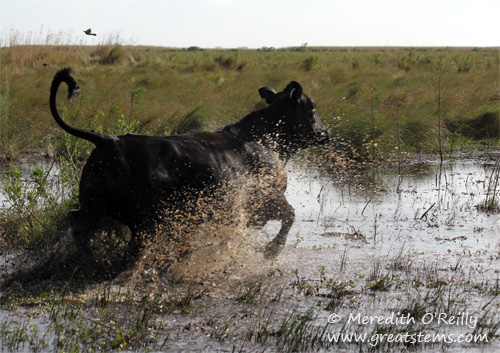 Ah, but we had adventures yet to come. We found that the maps we had and the roadway signs left something to be desired as we traveled that day in Louisiana. Trying to visit a particularly spot along the trail, we made a wrong turn, through no fault of our own (seriously), and after driving a bit we found ourselves on a road lined with curious cattle who splashed through the marshland to come over to see us. In moments lots of cows surrounded our Civic Hybrid, and those big cows made our little car seem smaller than ever.
Ah, but we had adventures yet to come. We found that the maps we had and the roadway signs left something to be desired as we traveled that day in Louisiana. Trying to visit a particularly spot along the trail, we made a wrong turn, through no fault of our own (seriously), and after driving a bit we found ourselves on a road lined with curious cattle who splashed through the marshland to come over to see us. In moments lots of cows surrounded our Civic Hybrid, and those big cows made our little car seem smaller than ever.
I snapped a picture of a cow just outside my window but it apparently decided that it wanted nothing to do with us or my camera, and it ran, which startled another cow running, and another, and before we knew it, we were in the middle of a stampede of some 25 startled cows rushing toward, around, and past us and our little vehicle.
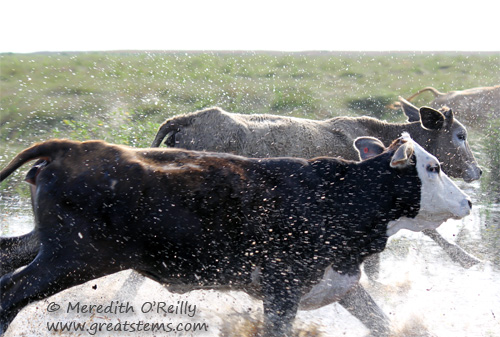 I had no choice but to keep moving my car in the same direction, very slowly, but it wasn’t until we began to pass a few of them that one mooed a “Hey, it’s okay” moo and the cows started to slow and calm down. The experience was a first for us, indeed, and in moments the cows just stared at us calmly again as if nothing had happened.
I had no choice but to keep moving my car in the same direction, very slowly, but it wasn’t until we began to pass a few of them that one mooed a “Hey, it’s okay” moo and the cows started to slow and calm down. The experience was a first for us, indeed, and in moments the cows just stared at us calmly again as if nothing had happened.
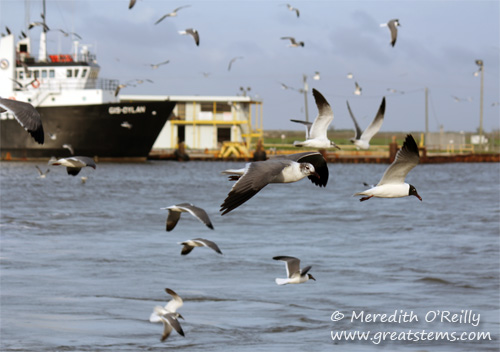 Back on the proper road, we continued to discover more reasons to gripe about the maps and lack of decent road signs, but eventually we found ourselves at a ferry, which takes cars across a ship channel to another portion of the highway. Even there at the ferry, we had sign issues. There was a sign and painted road marks showing where to stop to await the ferry, but there was no sign telling us that after 5pm you needed to drive over to another place in order to get on the ferry. So the driver of the car in front of us waited at the posted place, and we waited behind him, and time tick-tocked and tick-tocked, until a local resident drove up and said, “Hey, after 5pm you have to go over THERE to get on the ferry,” pointing to some place not visible from where we sat. Thank goodness he said something or we might still be at that stop sign waiting for the ferry.
Back on the proper road, we continued to discover more reasons to gripe about the maps and lack of decent road signs, but eventually we found ourselves at a ferry, which takes cars across a ship channel to another portion of the highway. Even there at the ferry, we had sign issues. There was a sign and painted road marks showing where to stop to await the ferry, but there was no sign telling us that after 5pm you needed to drive over to another place in order to get on the ferry. So the driver of the car in front of us waited at the posted place, and we waited behind him, and time tick-tocked and tick-tocked, until a local resident drove up and said, “Hey, after 5pm you have to go over THERE to get on the ferry,” pointing to some place not visible from where we sat. Thank goodness he said something or we might still be at that stop sign waiting for the ferry.
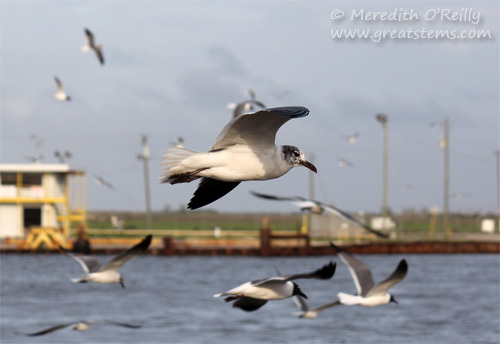 On the plus side, the boys hadn’t been on a ferry in a very long time, so far back they couldn’t remember the experience, so it was nice to be able to drive our car onto a boat, then get out and walk around for a few minutes as we crossed the channel. The gulls and pelicans flying all around us made it even more exciting.
On the plus side, the boys hadn’t been on a ferry in a very long time, so far back they couldn’t remember the experience, so it was nice to be able to drive our car onto a boat, then get out and walk around for a few minutes as we crossed the channel. The gulls and pelicans flying all around us made it even more exciting.
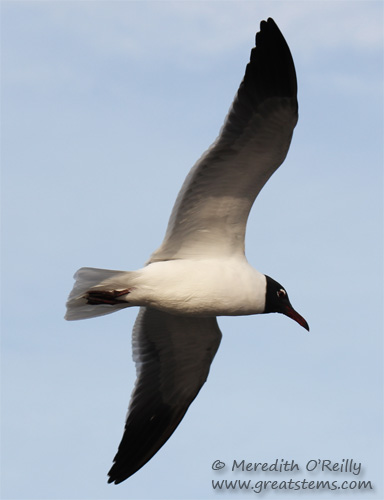 The gulls in particular followed the ferry en masse, hovering just off the back as the waters churned around us. Perhaps they hoped some people would toss them food, but they honestly didn’t seem interested in the humans on the ferry — maybe instead they were hoping to spot some fish in the waters behind the boat.
The gulls in particular followed the ferry en masse, hovering just off the back as the waters churned around us. Perhaps they hoped some people would toss them food, but they honestly didn’t seem interested in the humans on the ferry — maybe instead they were hoping to spot some fish in the waters behind the boat.
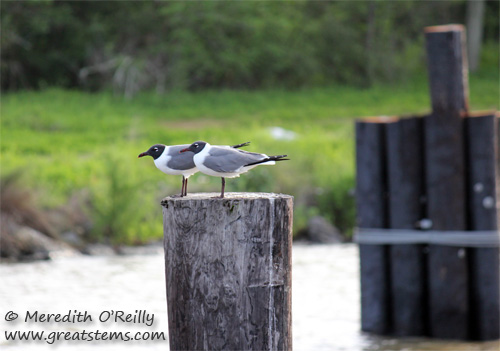
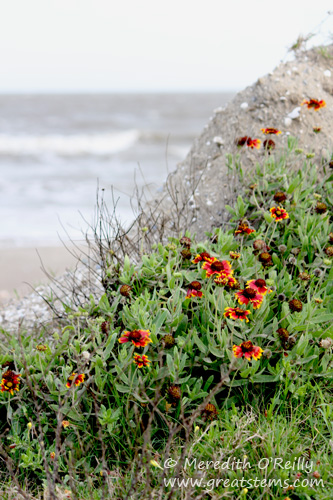 Soon after the ferry ride, we found ourselves driving along the beach. We pulled over to look for shells and found them we did — many were huge!
Soon after the ferry ride, we found ourselves driving along the beach. We pulled over to look for shells and found them we did — many were huge!
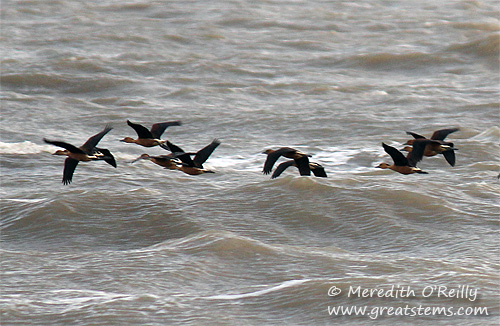 Fulvous Whistling-Ducks
Fulvous Whistling-Ducks
The Louisiana coast was so different from the coasts of Florida’s peninsula, but it reminded me much of the familiar coasts of Texas. Clearly we were close to home!
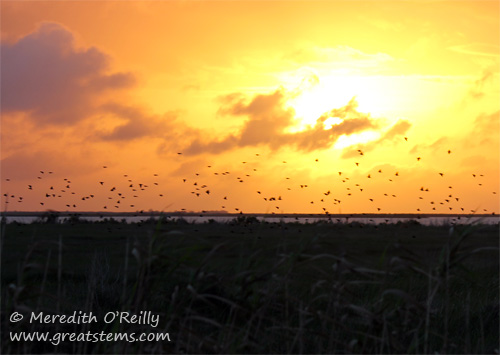
The sun went down as we finished our drive along the Creole Trail, and thousands of Red-Winged Blackbirds silhouetted against the sun’s vibrant setting colors marked the final wildlife viewing of our vacation. It was time to get home to see Texas once again.
Thanks for joining us on our journey across the southern states to Florida and back. It created many memories of a lifetime for me and my boys, and we can’t wait to go back!
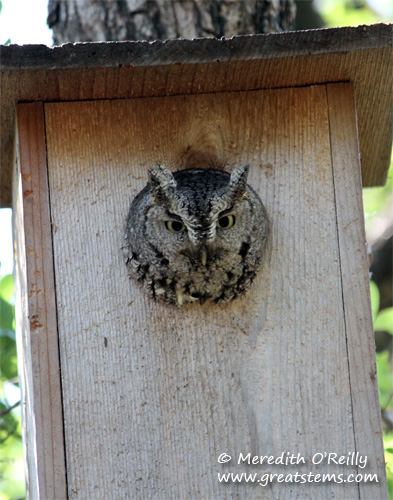 She switched houses, too — opting for the house in the back of the yard instead of the side. I think it was a fine choice for her to select the other apartment — a woman always has the right to change her mind and also to rearrange furniture! Or in this case, just plain move. Though she’s on a tree that sways in the wind a lot more, she sure gets a good view of everything going on in the yard.
She switched houses, too — opting for the house in the back of the yard instead of the side. I think it was a fine choice for her to select the other apartment — a woman always has the right to change her mind and also to rearrange furniture! Or in this case, just plain move. Though she’s on a tree that sways in the wind a lot more, she sure gets a good view of everything going on in the yard.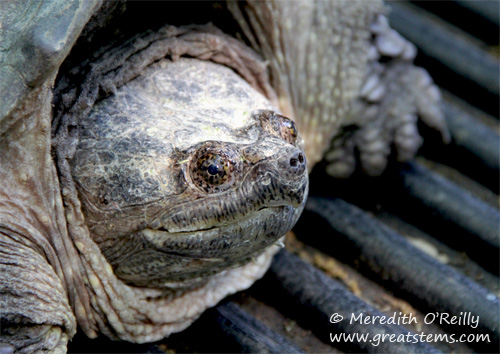
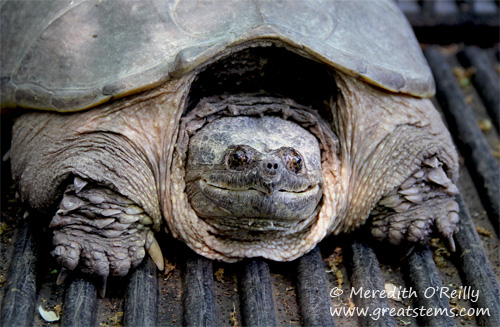
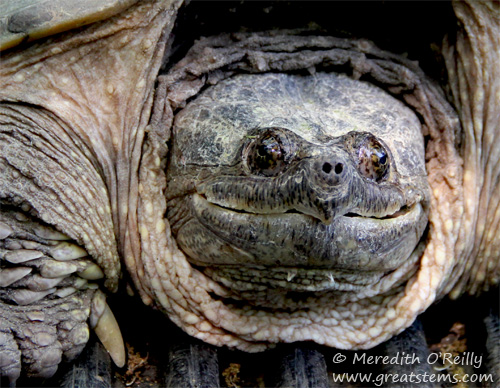
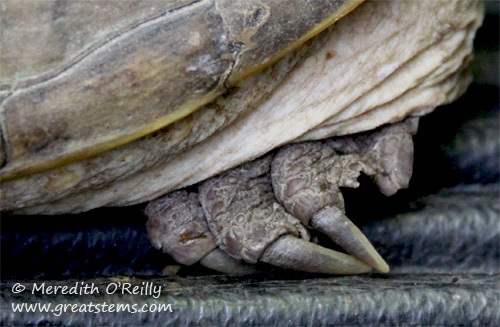 Look at the gorgeous claws.
Look at the gorgeous claws. 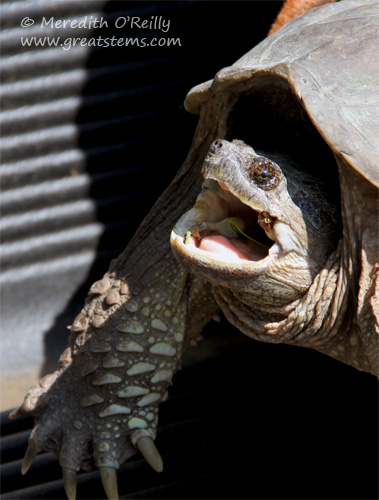 And the nifty plates on the legs — a vision in armor. Actually, take a look inside the mouth, too. For one thing, you can see whatever plant part it munched on. But you can also see its wide tongue, one of the ways you can distinguish a Common Snapping Turtle from an Alligator Snapping Turtle. Just don’t look TOO closely, if you know what I mean.
And the nifty plates on the legs — a vision in armor. Actually, take a look inside the mouth, too. For one thing, you can see whatever plant part it munched on. But you can also see its wide tongue, one of the ways you can distinguish a Common Snapping Turtle from an Alligator Snapping Turtle. Just don’t look TOO closely, if you know what I mean.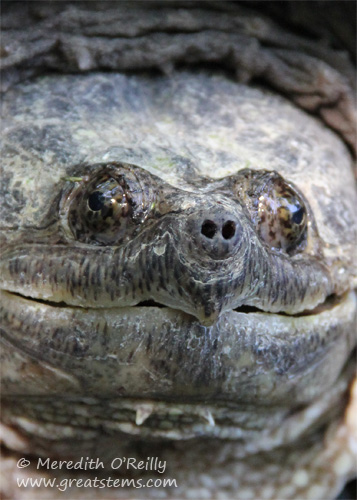 Jaws also had perfect little nostrils on the tip of its nose. Can you just imagine the turtle laying low in the water and muck, reaching its head up to the surface every once in a while to take a breath of air?
Jaws also had perfect little nostrils on the tip of its nose. Can you just imagine the turtle laying low in the water and muck, reaching its head up to the surface every once in a while to take a breath of air? 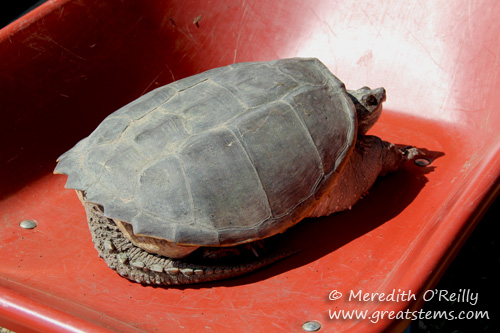 Another distinguishing characteristic of a Common Snapping Turtle is its long tail.
Another distinguishing characteristic of a Common Snapping Turtle is its long tail. 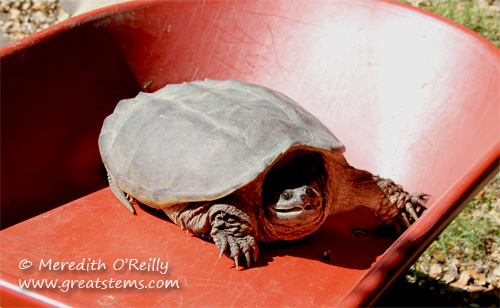
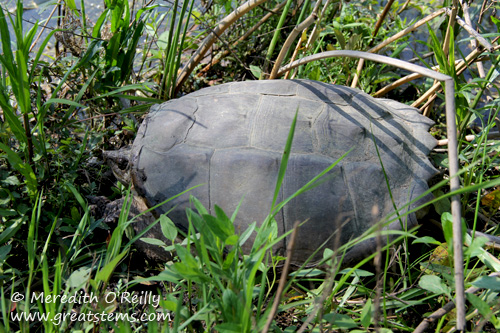
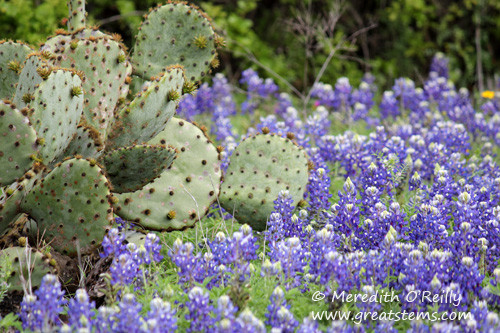
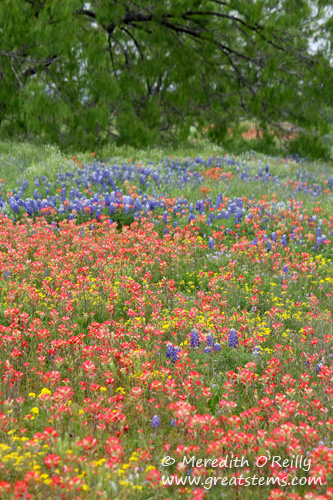
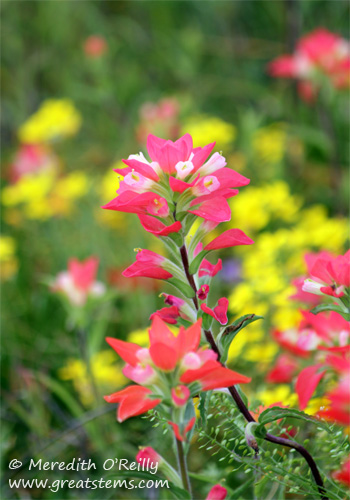
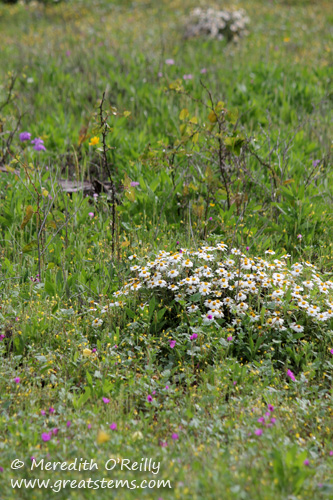
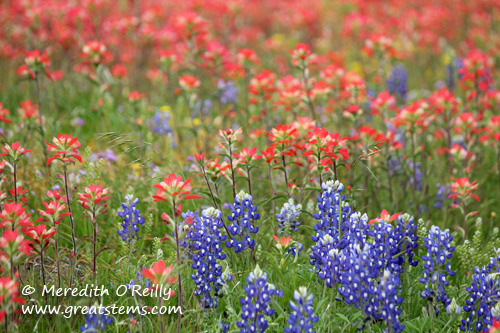
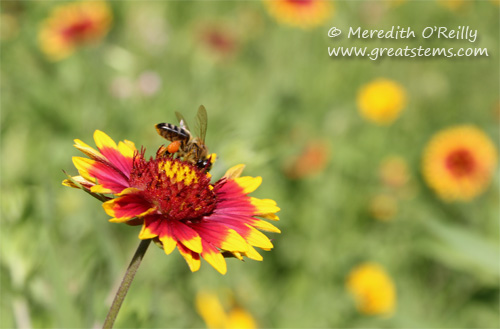
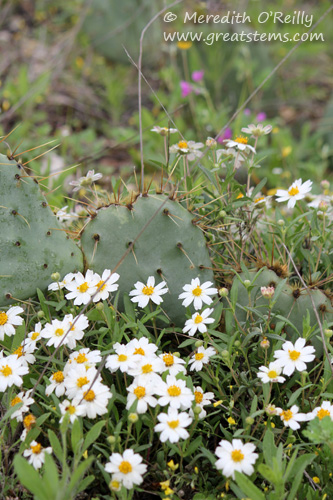
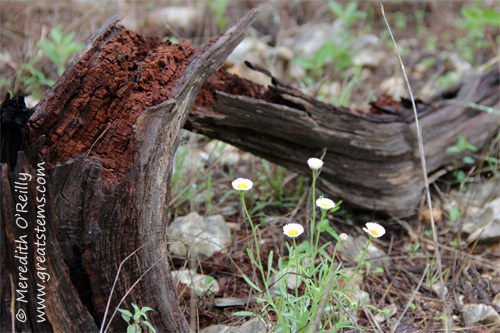 Prairie Fleabane
Prairie Fleabane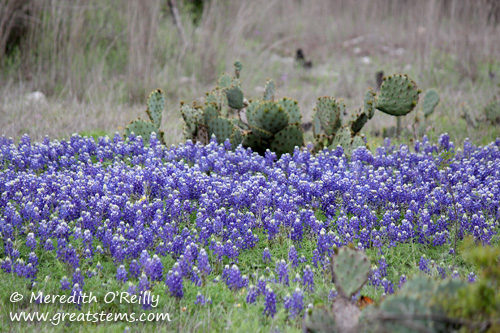
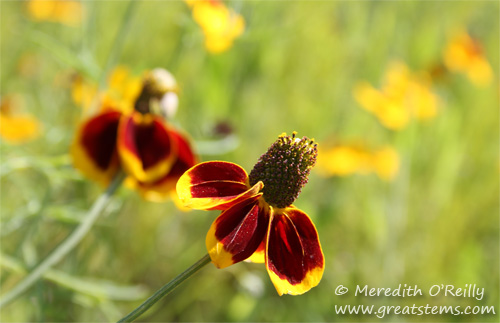
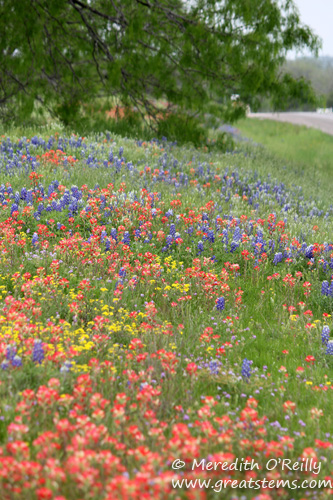
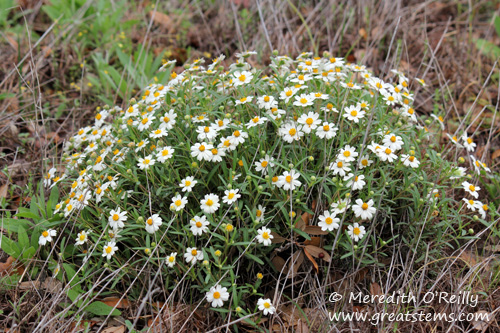
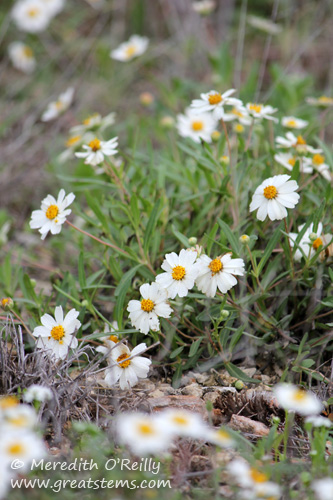
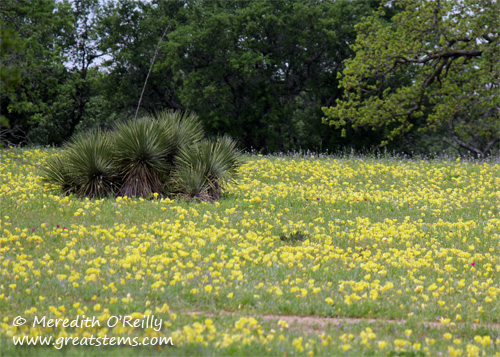
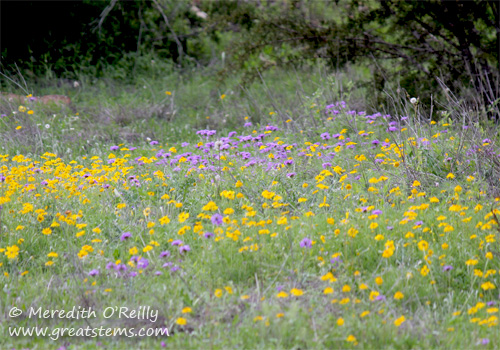
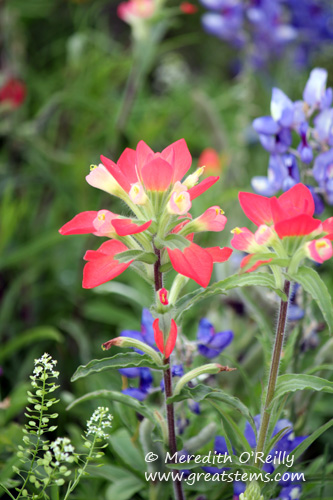
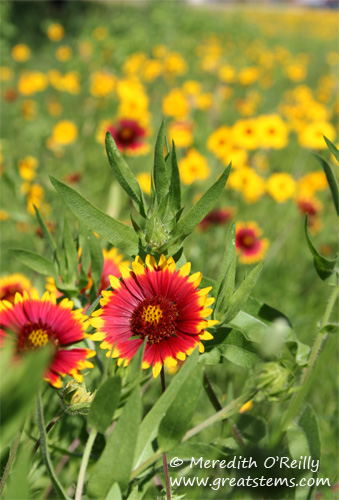
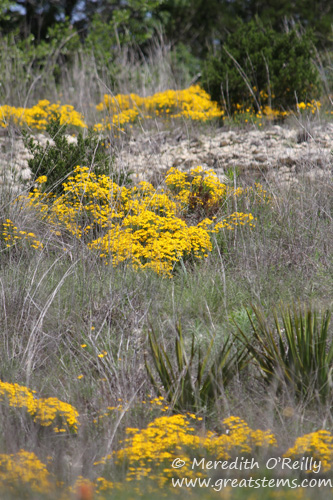
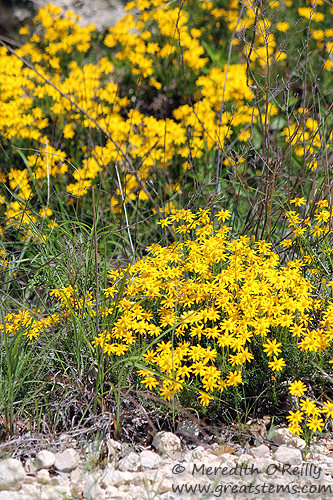
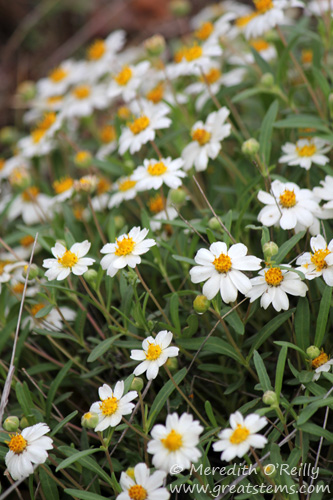
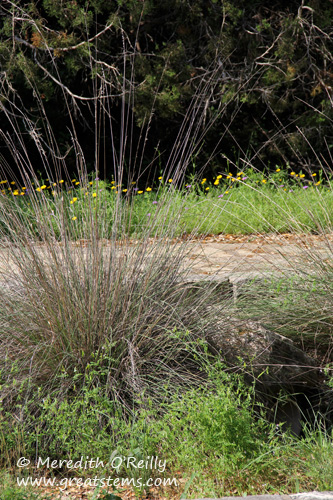
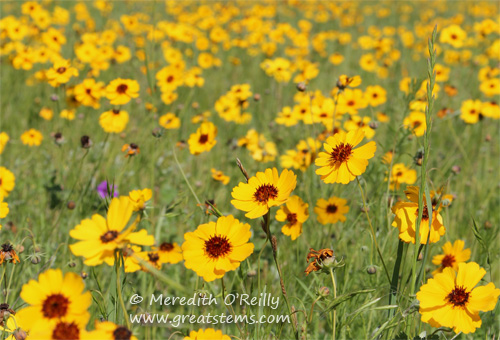
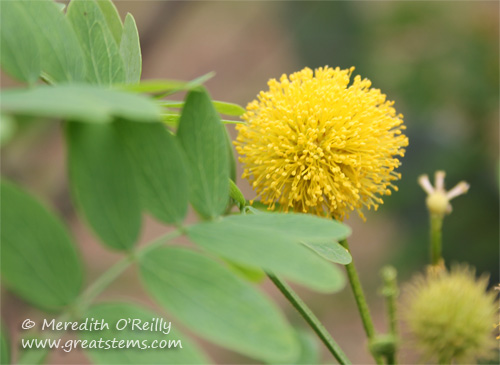
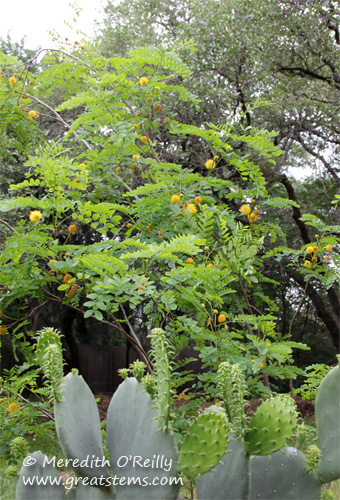
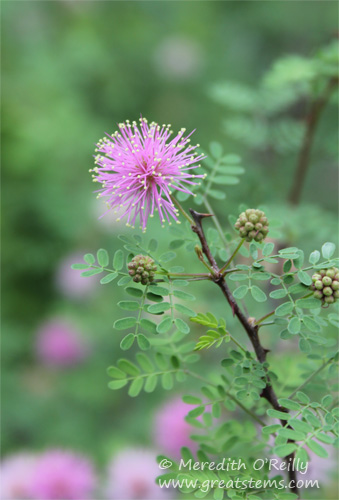
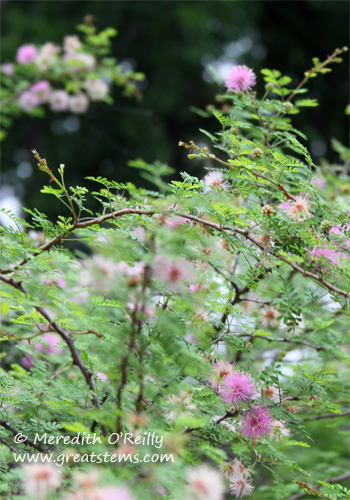 The soft pink puffballs are a contrast to the sneaky thorns up and down the branches.
The soft pink puffballs are a contrast to the sneaky thorns up and down the branches.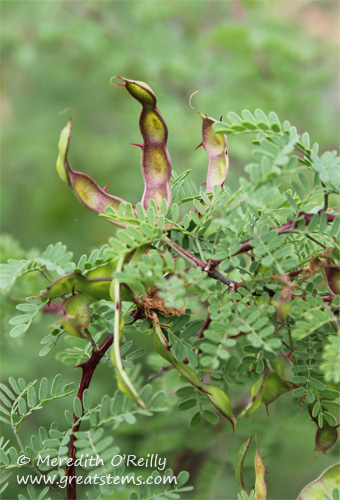
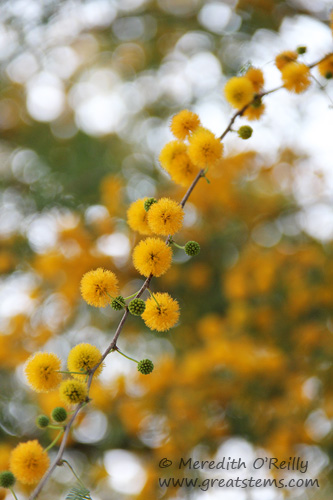
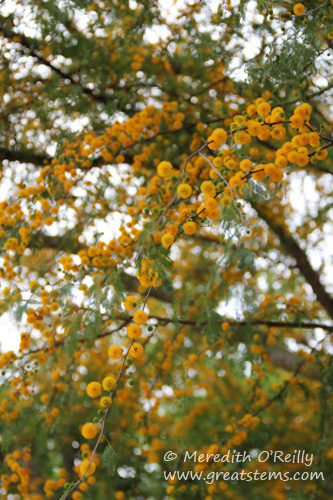
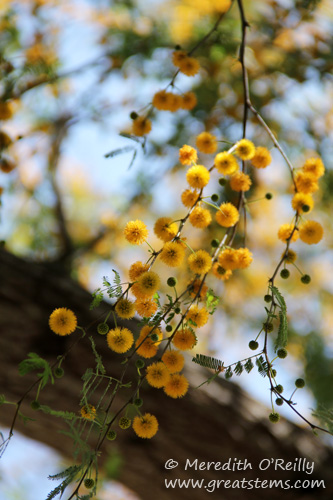 2-4-6-8, Pom-Poms I appreciate!
2-4-6-8, Pom-Poms I appreciate!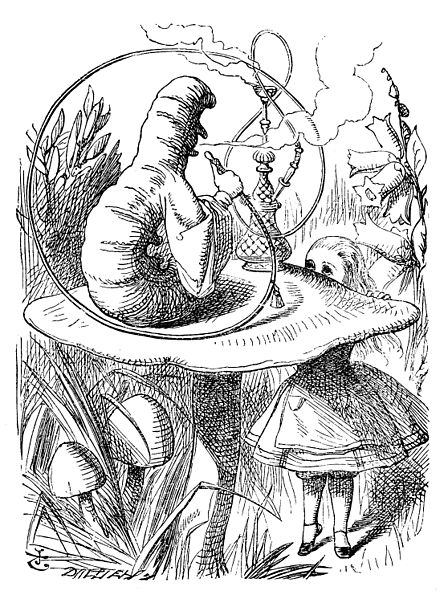
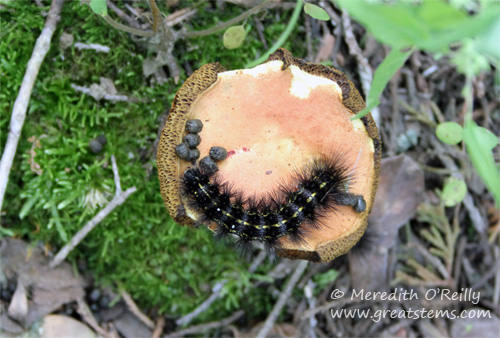 The caterpillar-on-mushroom above was found at
The caterpillar-on-mushroom above was found at 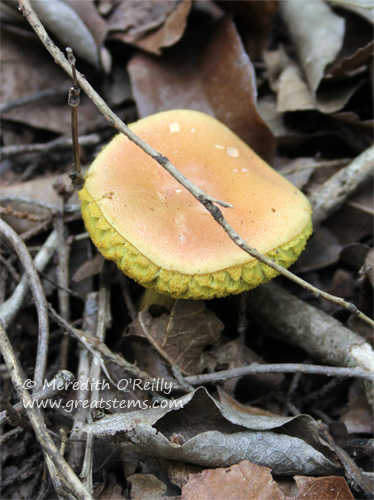
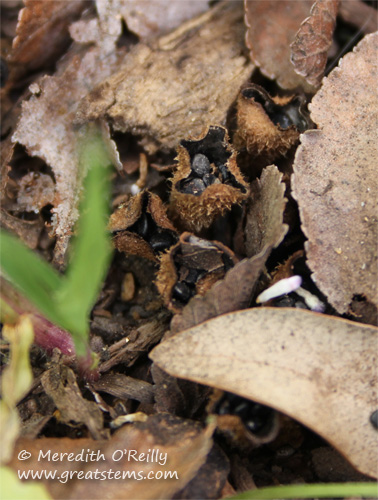
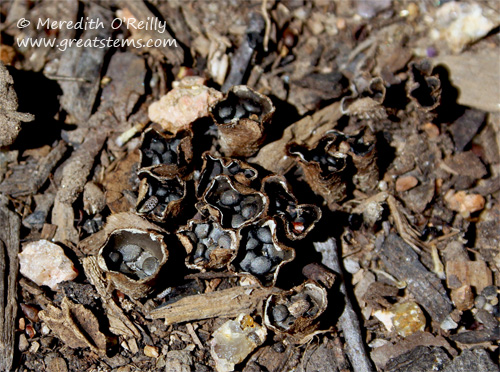
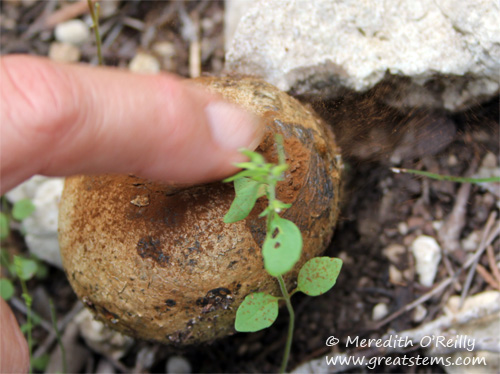
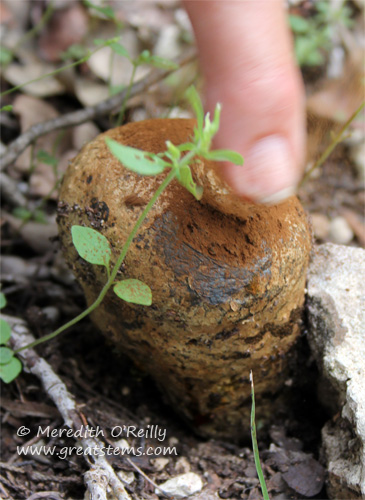
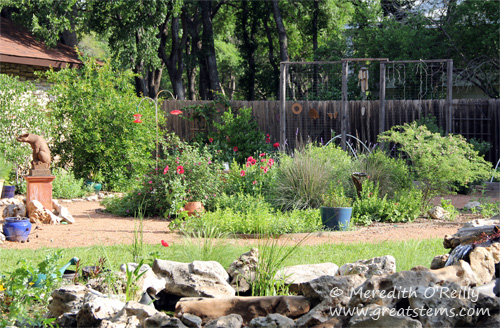
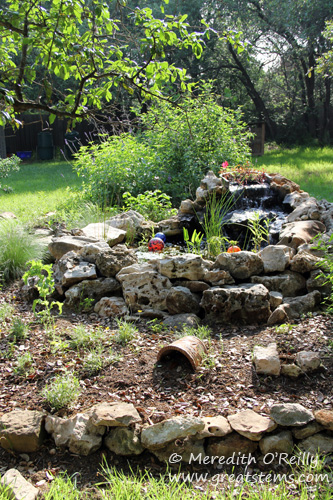 Last year we built the soil up around the pond to make a berm, and this year we’ve been creating a border around it and filling it in with plants. At some point I’ll show you a different view of the pond area, as it’s looking really nice (I just forgot to take the picture, and I’m impatient to show the changes).
Last year we built the soil up around the pond to make a berm, and this year we’ve been creating a border around it and filling it in with plants. At some point I’ll show you a different view of the pond area, as it’s looking really nice (I just forgot to take the picture, and I’m impatient to show the changes).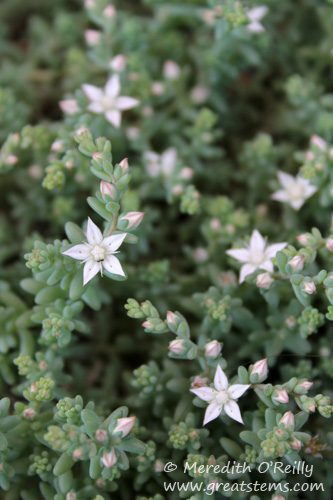
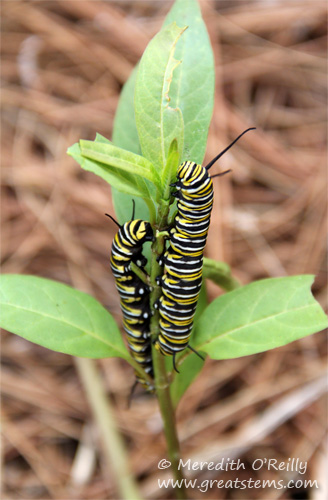
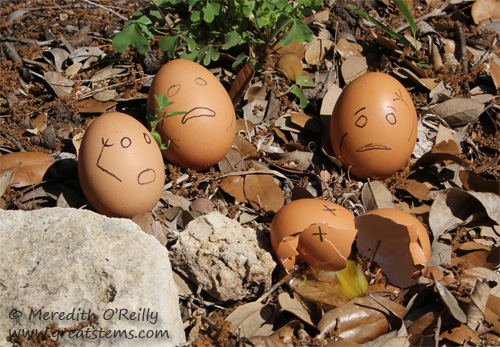
 We wanted to visit a wildife refuge in Louisiana to get an idea of environmental differences between it and Florida — and if we had an opportunity, to sneak in a glimpse of the coast. The answer — the
We wanted to visit a wildife refuge in Louisiana to get an idea of environmental differences between it and Florida — and if we had an opportunity, to sneak in a glimpse of the coast. The answer — the 

 A boardwalk and observation deck make it easy to look search for water-loving birds, and we observed White Ibises, different species of ducks, Great Egrets, Coots, Grebes, Great Blue Herons, and others.
A boardwalk and observation deck make it easy to look search for water-loving birds, and we observed White Ibises, different species of ducks, Great Egrets, Coots, Grebes, Great Blue Herons, and others. Carpenter Bee — it’s very difficult to capture an image of this fast-flying insect!
Carpenter Bee — it’s very difficult to capture an image of this fast-flying insect!


 The boys, throughout our entire trip, were quite the naturalists, and they were excellent at both finding and IDing wildlife species — Louisiana was no exception.
The boys, throughout our entire trip, were quite the naturalists, and they were excellent at both finding and IDing wildlife species — Louisiana was no exception. The Red-Winged Blackbirds were the most plentiful birds we saw in southwestern Louisiana. Great numbers of large flocks were spotted time and again throughout the marshland and agricultural areas we visited.
The Red-Winged Blackbirds were the most plentiful birds we saw in southwestern Louisiana. Great numbers of large flocks were spotted time and again throughout the marshland and agricultural areas we visited. Female Red-Winged Blackbird
Female Red-Winged Blackbird

 Ah, but we had adventures yet to come. We found that the maps we had and the roadway signs left something to be desired as we traveled that day in Louisiana. Trying to visit a particularly spot along the trail, we made a wrong turn, through no fault of our own (seriously), and after driving a bit we found ourselves on a road lined with curious cattle who splashed through the marshland to come over to see us. In moments lots of cows surrounded our Civic Hybrid, and those big cows made our little car seem smaller than ever.
Ah, but we had adventures yet to come. We found that the maps we had and the roadway signs left something to be desired as we traveled that day in Louisiana. Trying to visit a particularly spot along the trail, we made a wrong turn, through no fault of our own (seriously), and after driving a bit we found ourselves on a road lined with curious cattle who splashed through the marshland to come over to see us. In moments lots of cows surrounded our Civic Hybrid, and those big cows made our little car seem smaller than ever.
 Back on the proper road, we continued to discover more reasons to gripe about the maps and lack of decent road signs, but eventually we found ourselves at a ferry, which takes cars across a ship channel to another portion of the highway. Even there at the ferry, we had sign issues. There was a sign and painted road marks showing where to stop to await the ferry, but there was no sign telling us that after 5pm you needed to drive over to another place in order to get on the ferry. So the driver of the car in front of us waited at the posted place, and we waited behind him, and time tick-tocked and tick-tocked, until a local resident drove up and said, “Hey, after 5pm you have to go over THERE to get on the ferry,” pointing to some place not visible from where we sat. Thank goodness he said something or we might still be at that stop sign waiting for the ferry.
Back on the proper road, we continued to discover more reasons to gripe about the maps and lack of decent road signs, but eventually we found ourselves at a ferry, which takes cars across a ship channel to another portion of the highway. Even there at the ferry, we had sign issues. There was a sign and painted road marks showing where to stop to await the ferry, but there was no sign telling us that after 5pm you needed to drive over to another place in order to get on the ferry. So the driver of the car in front of us waited at the posted place, and we waited behind him, and time tick-tocked and tick-tocked, until a local resident drove up and said, “Hey, after 5pm you have to go over THERE to get on the ferry,” pointing to some place not visible from where we sat. Thank goodness he said something or we might still be at that stop sign waiting for the ferry.
 The gulls in particular followed the ferry en masse, hovering just off the back as the waters churned around us. Perhaps they hoped some people would toss them food, but they honestly didn’t seem interested in the humans on the ferry — maybe instead they were hoping to spot some fish in the waters behind the boat.
The gulls in particular followed the ferry en masse, hovering just off the back as the waters churned around us. Perhaps they hoped some people would toss them food, but they honestly didn’t seem interested in the humans on the ferry — maybe instead they were hoping to spot some fish in the waters behind the boat.
 Soon after the ferry ride, we found ourselves driving along the beach. We pulled over to look for shells and found them we did — many were huge!
Soon after the ferry ride, we found ourselves driving along the beach. We pulled over to look for shells and found them we did — many were huge! 

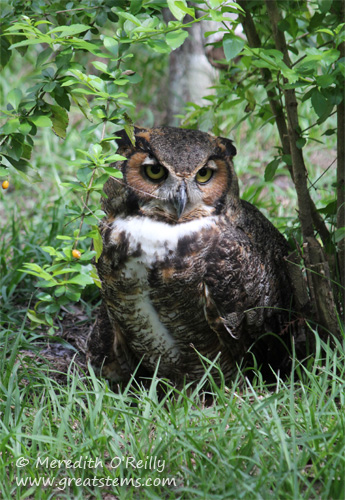
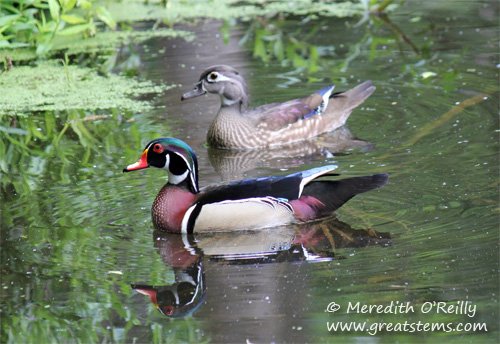
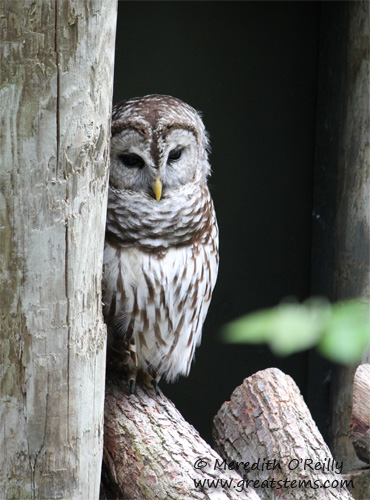 Barred Owl
Barred Owl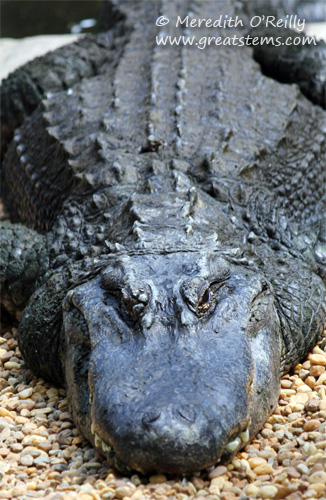
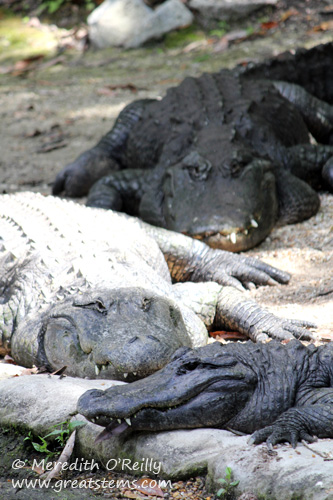
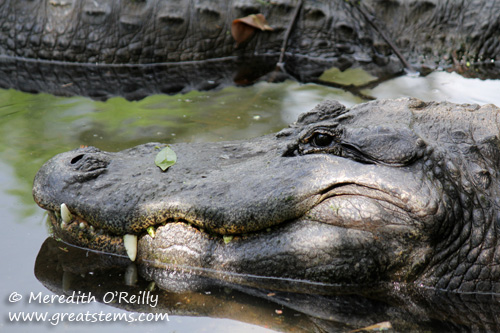
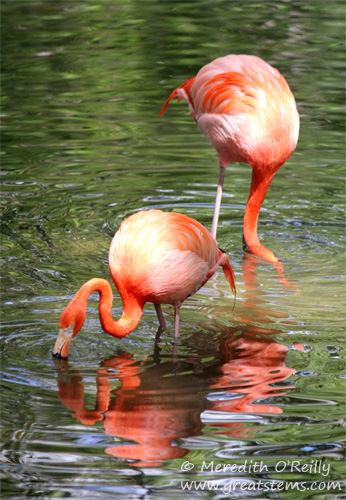
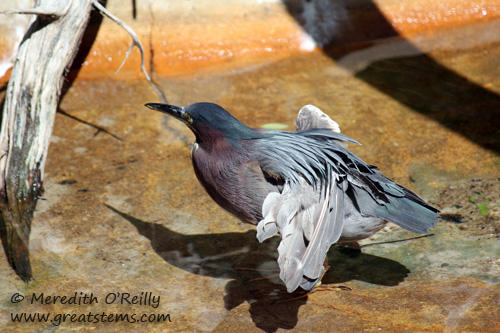 This Green Heron has a severe wing injury, and lucky for it, it has a home at the state park.
This Green Heron has a severe wing injury, and lucky for it, it has a home at the state park.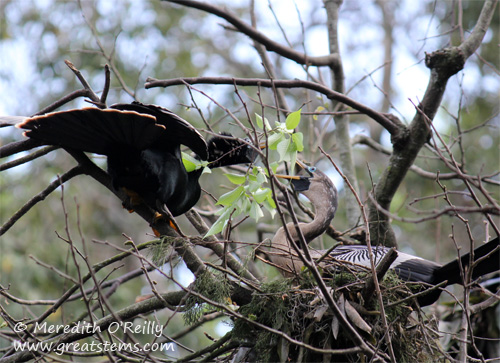
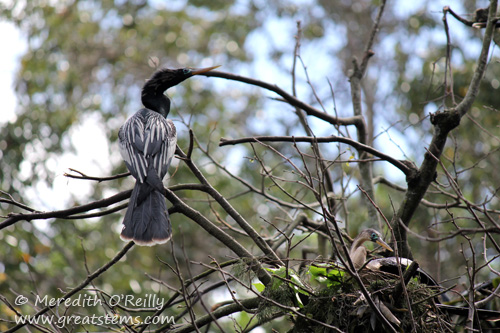 Eventually he got the branch in an acceptable spot.
Eventually he got the branch in an acceptable spot.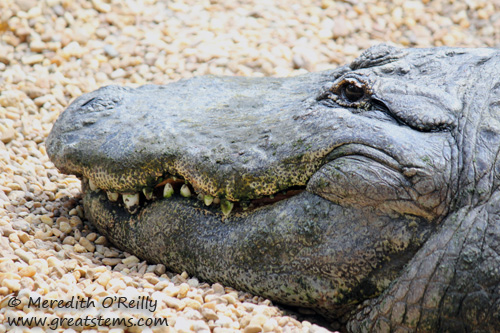
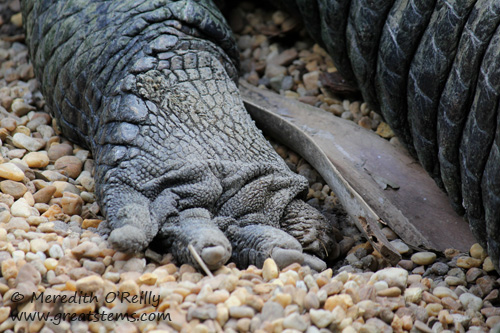
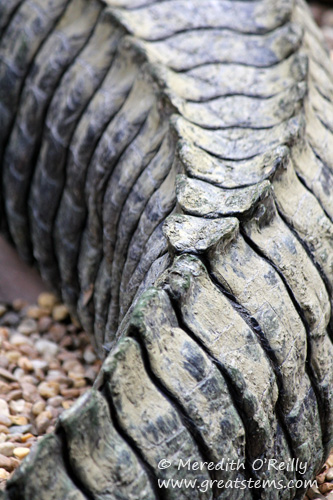
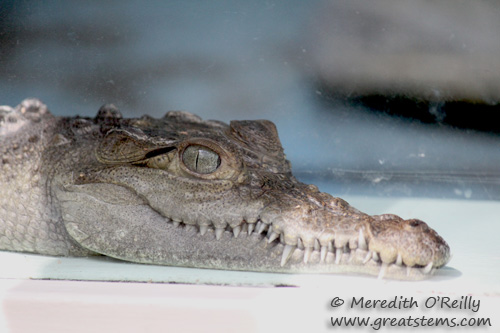
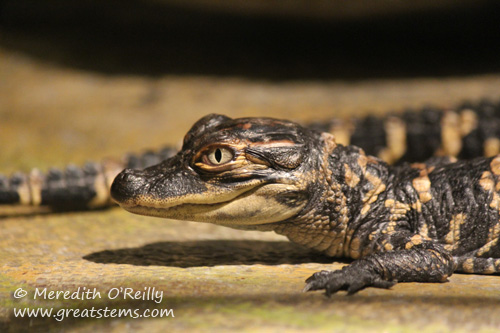
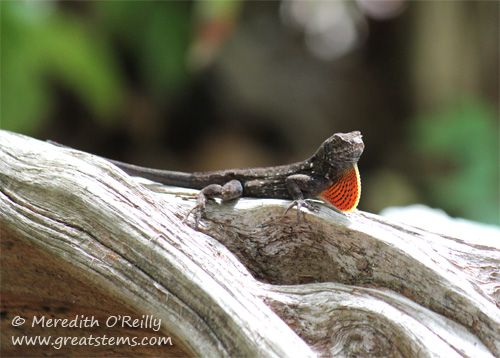
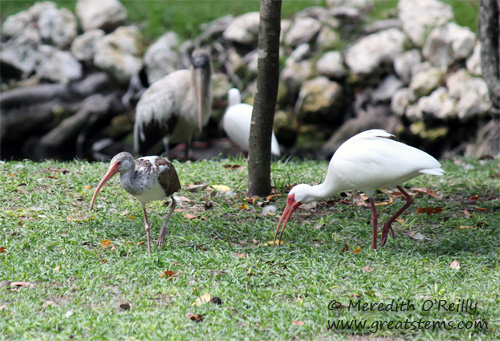
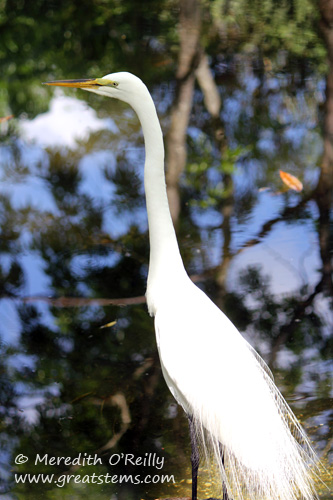
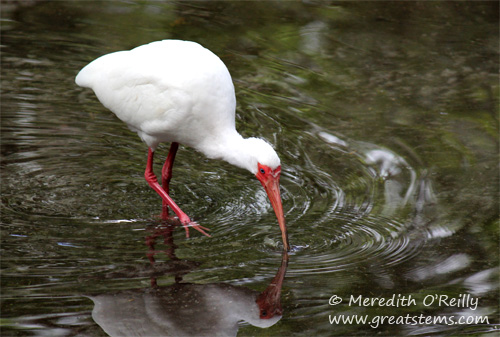
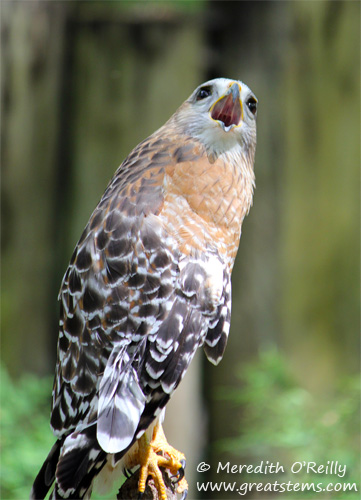
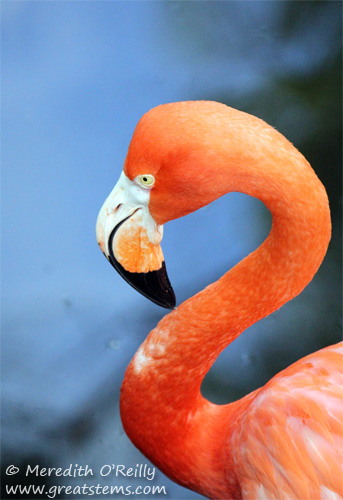 Flamingo
Flamingo
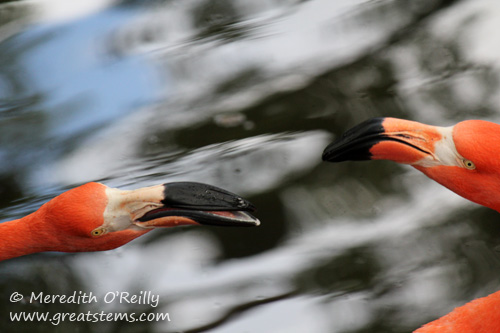
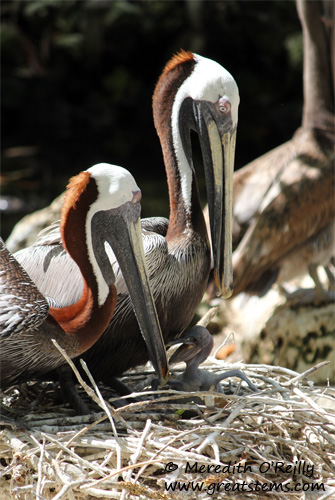
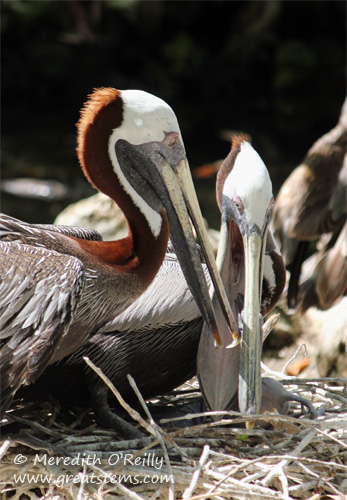
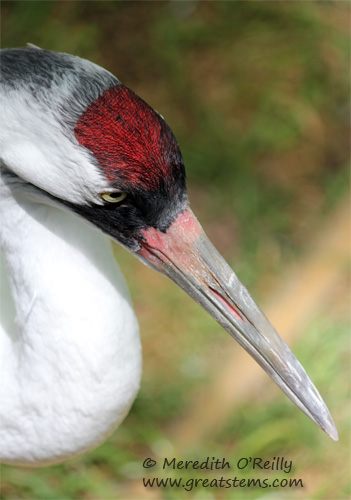
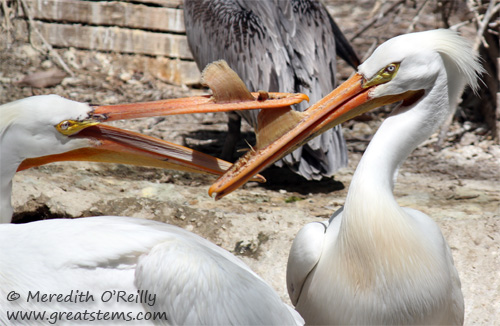
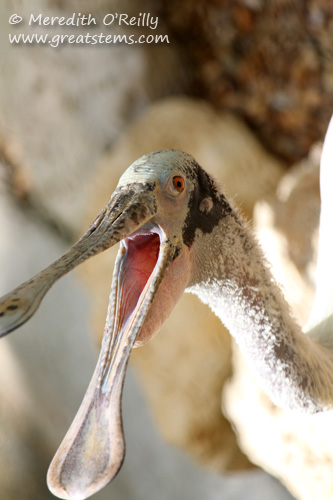
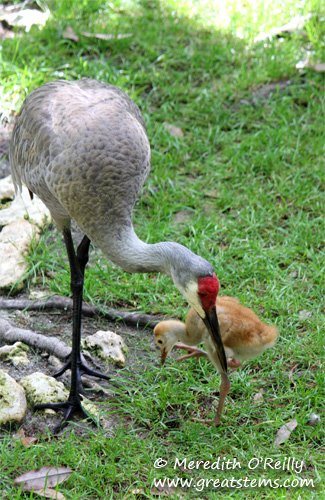
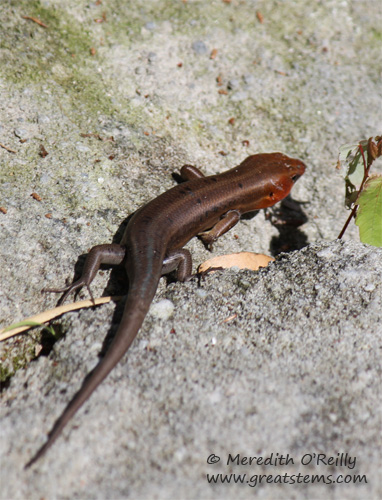
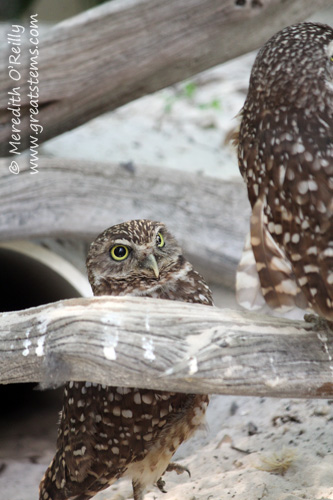
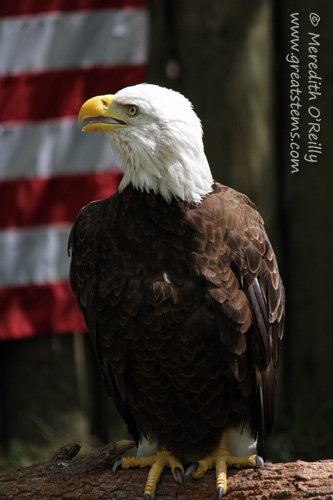
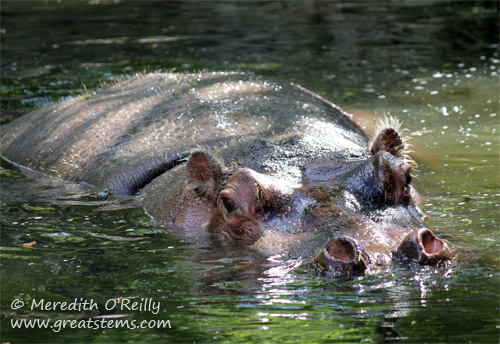
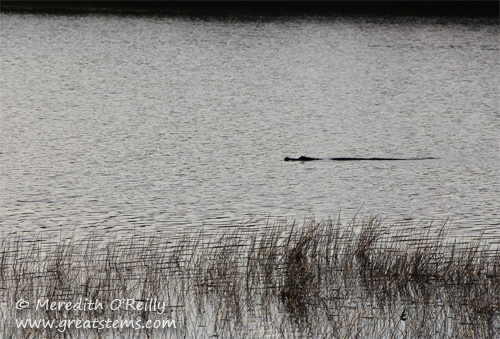 One of the highlights of our
One of the highlights of our 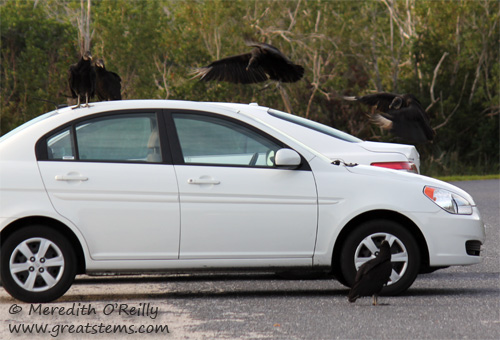
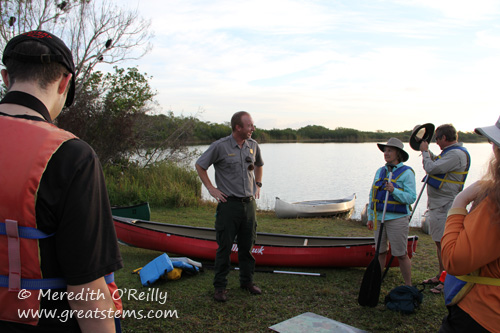
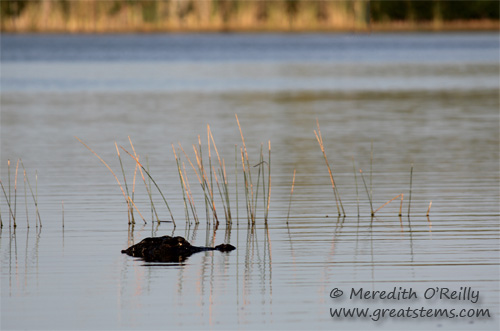
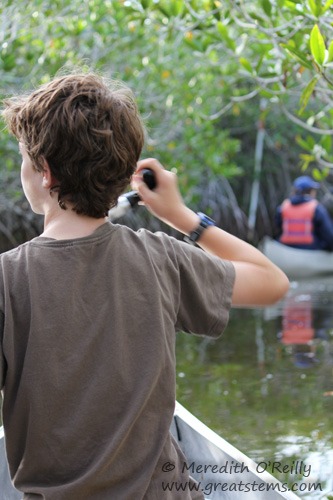 Sometimes we maneuvered through tunnels made from overhead arching branches, while the mangrove roots arched downward into the water. In case you are wondering why my son isn’t wearing a life jacket in the image above, the Park Ranger let us take them off once we were in the shallow waters of the mangroves. I opted not to “rock the boat.”
Sometimes we maneuvered through tunnels made from overhead arching branches, while the mangrove roots arched downward into the water. In case you are wondering why my son isn’t wearing a life jacket in the image above, the Park Ranger let us take them off once we were in the shallow waters of the mangroves. I opted not to “rock the boat.”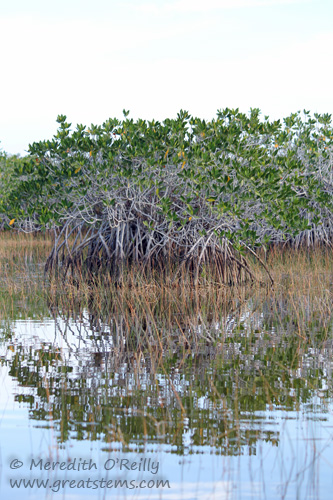 Red Mangroves create a community utilized by many different plants and animal species. Additionally, they serve as protection for the delicate ecosystem, especially during hurricanes.
Red Mangroves create a community utilized by many different plants and animal species. Additionally, they serve as protection for the delicate ecosystem, especially during hurricanes.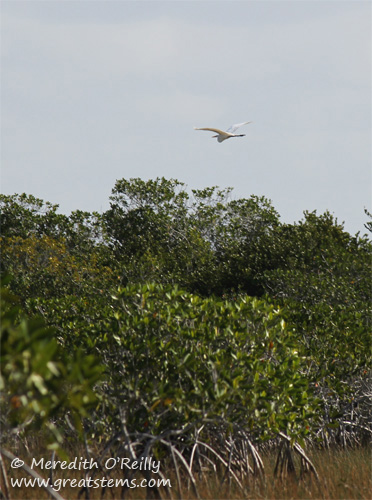 We saw the occasional alligator, and several birds took flight as we paddled our way around curves and corners.
We saw the occasional alligator, and several birds took flight as we paddled our way around curves and corners.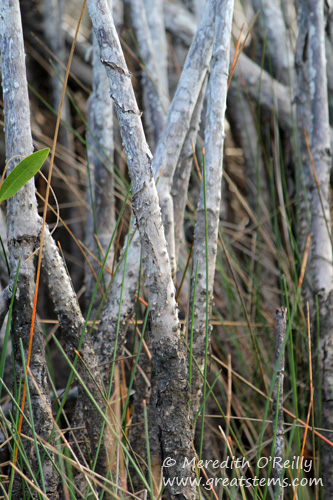 The upright Mangrove roots stood out of the water like stilts, supporting the tree above.
The upright Mangrove roots stood out of the water like stilts, supporting the tree above.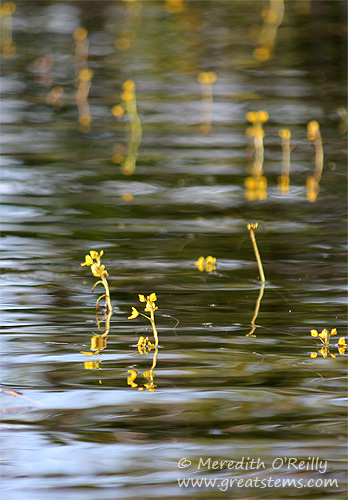
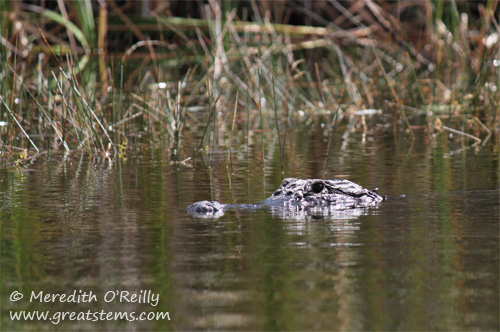
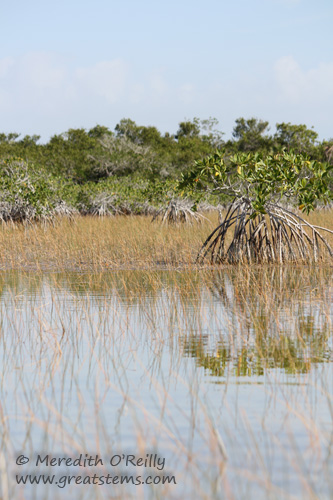 Out in an open area of Spike Rush and scattered Mangroves, our group paused to discuss the movement of water through the Everglades ecosystems and how wildlife adapts to the flow of water in wet and dry seasons.
Out in an open area of Spike Rush and scattered Mangroves, our group paused to discuss the movement of water through the Everglades ecosystems and how wildlife adapts to the flow of water in wet and dry seasons. 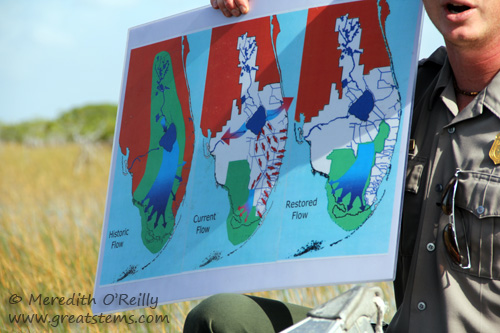
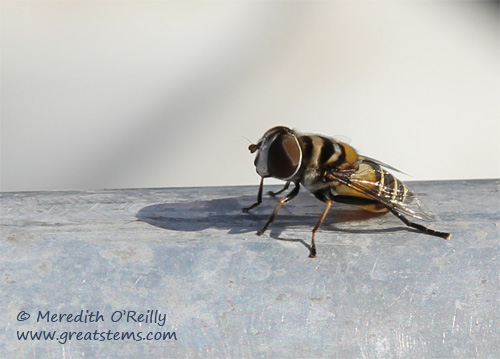
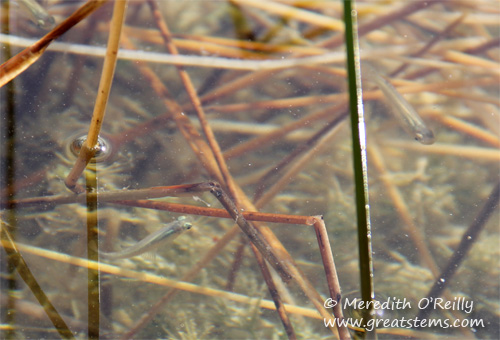 Below us, we only saw small fish, but much larger fish can be found throughout the fresh to brackish waters.
Below us, we only saw small fish, but much larger fish can be found throughout the fresh to brackish waters.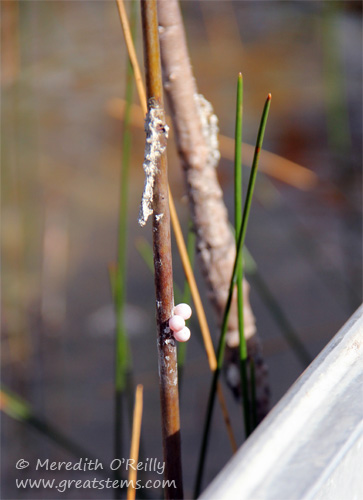
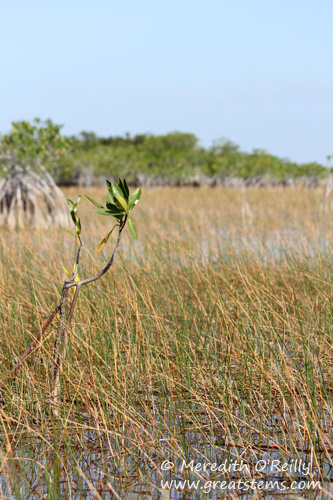
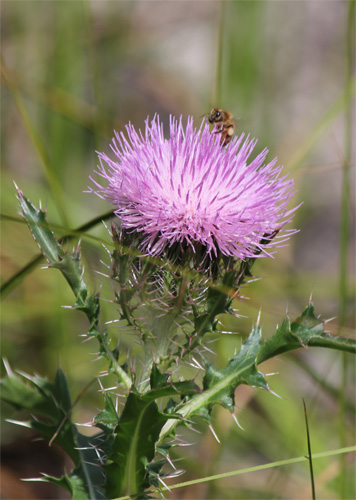
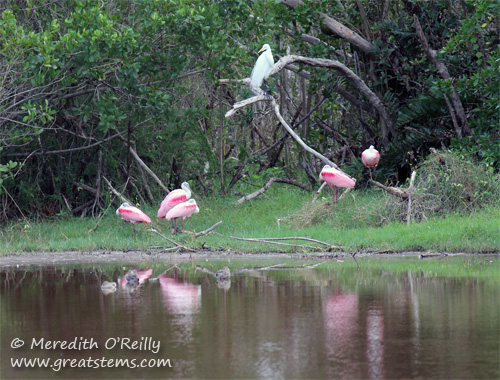 After leaving the 9-mile pond, we headed south toward Flamingo. Along the way we spotted Roseate Spoonbills and many other birds at Mrazek Pond, which as it turns out happens to be a prime birding location.
After leaving the 9-mile pond, we headed south toward Flamingo. Along the way we spotted Roseate Spoonbills and many other birds at Mrazek Pond, which as it turns out happens to be a prime birding location.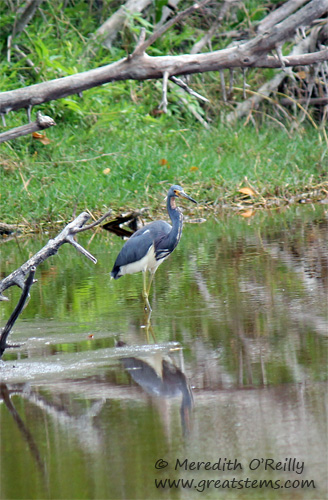
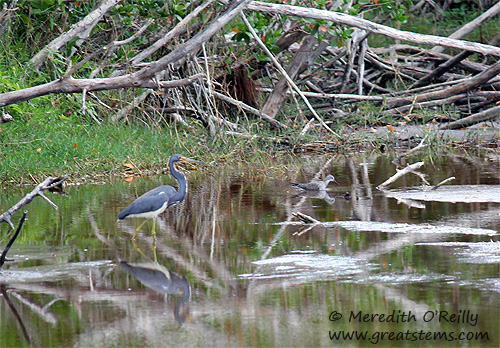
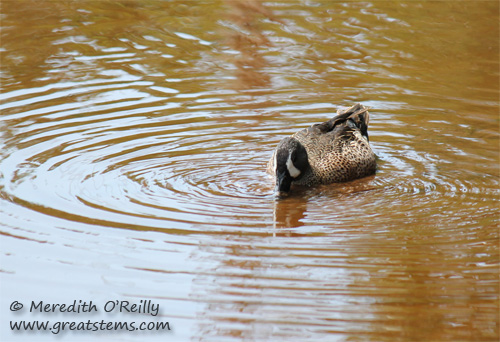 Blue-Winged Teal, Female
Blue-Winged Teal, Female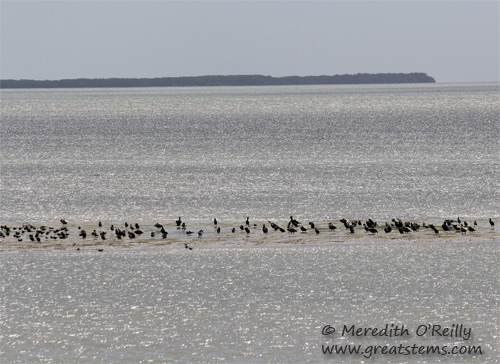 View from Flamingo, Southern Everglades
View from Flamingo, Southern Everglades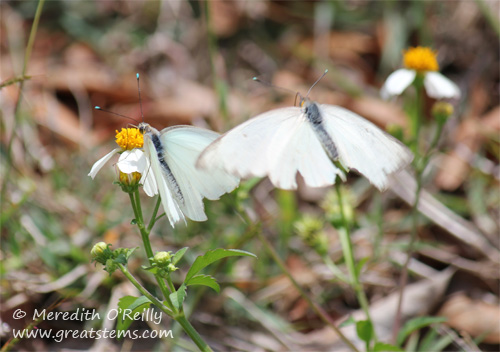 Down at Flamingo, we walked about the Visitor’s Center, enjoying sights of birds and butterflies. Manatees were mating at the marina, as well.
Down at Flamingo, we walked about the Visitor’s Center, enjoying sights of birds and butterflies. Manatees were mating at the marina, as well.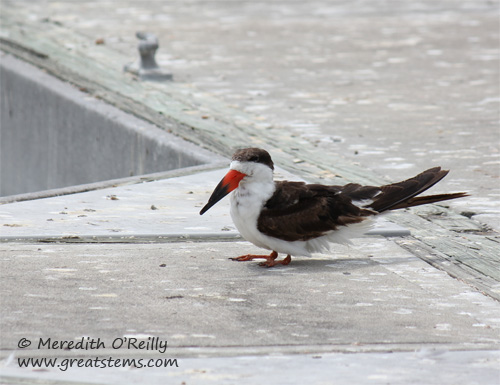
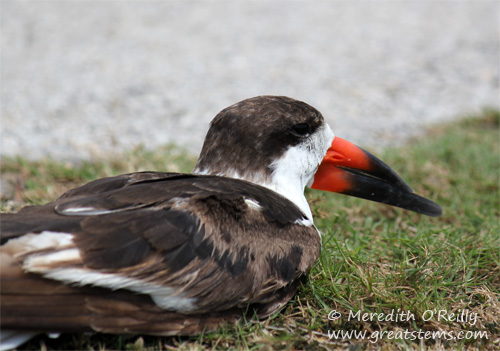 I fell in love with the Black Skimmers, especially fascinated by the elongated lower mandible that allows a skimmer to, well, skim the water for its food.
I fell in love with the Black Skimmers, especially fascinated by the elongated lower mandible that allows a skimmer to, well, skim the water for its food.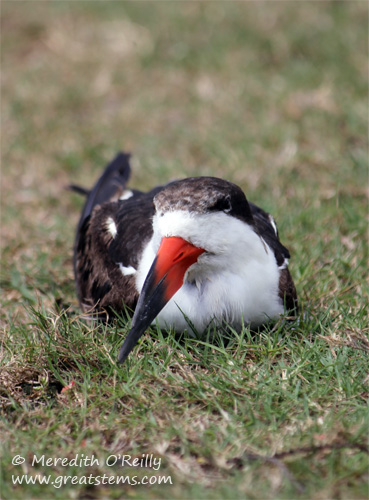
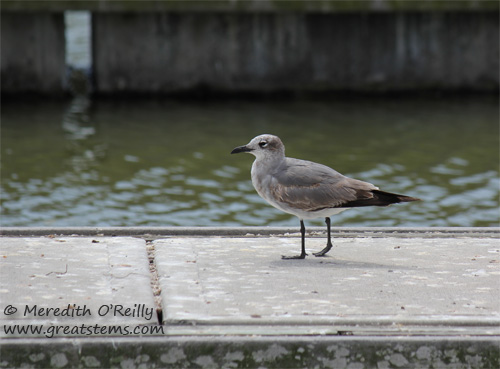
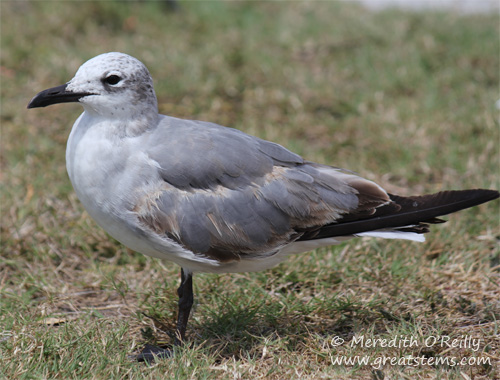
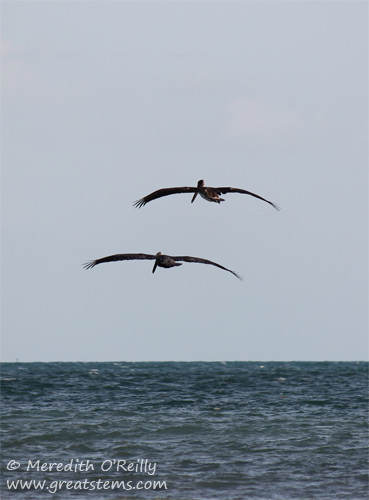
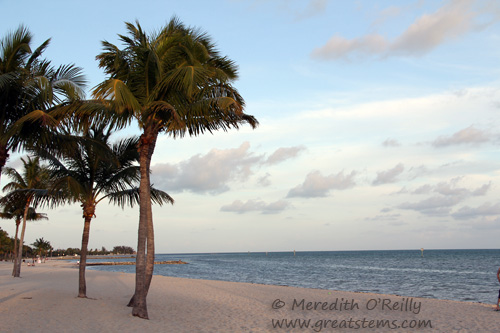 From this southernmost point, we pointed our car north again. It was time to head back toward Austin, but we still had a few stops to make during our journey home….
From this southernmost point, we pointed our car north again. It was time to head back toward Austin, but we still had a few stops to make during our journey home….